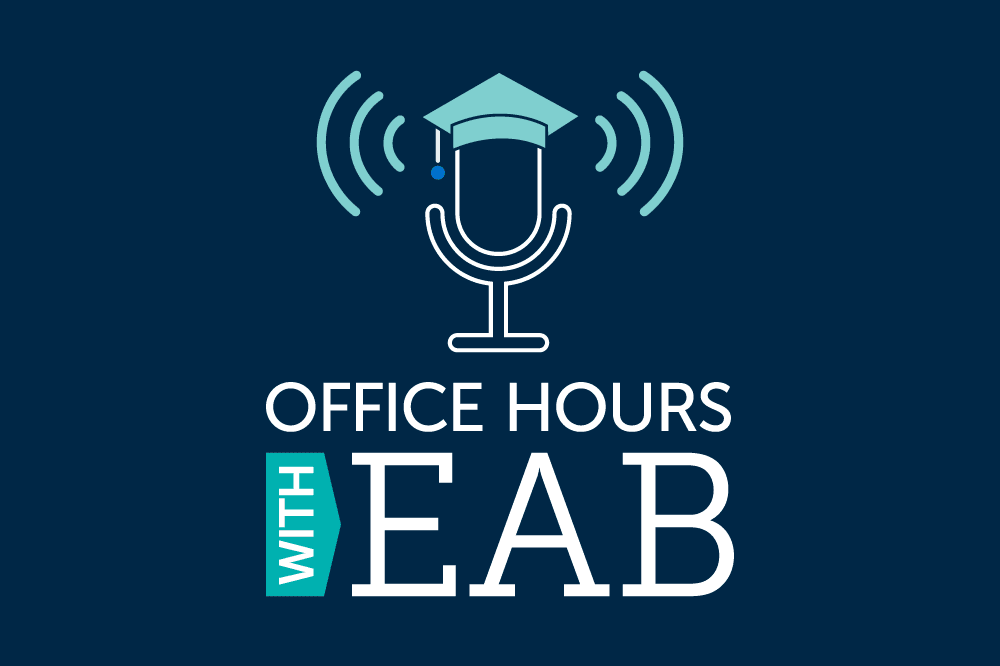Higher Ed Podcast | Office Hours with EAB
A podcast where higher education leaders, experts, and trailblazers share valuable insights and ideas that address virtually every facet of university operations.
Listen to Our Latest Episodes
See All Podcasts
Podcast
How Graduate Enrollment Teams Are Adapting
Experts share findings from EAB’s latest benchmarking survey of nearly 350 graduate enrollment professionals.

Podcast
How to Empower Student Success Through Peer Tutoring
Experts discuss how to build a peer tutoring strategy that improves academic outcomes as well as retention and…

Podcast
New College Rankings Focus on Student Success
Experts discuss why the new Student Access and Earnings Classification could help redefine institutional excellence around student success.

Podcast
Decision Day: Top Factors That Sway College Applicants
Experts analyze new data on the top factors—such as cost and campus safety—that determine where prospective college students…

Podcast
How Will Federal Cuts Impact Grant Strategies?
Experts discuss what is known and what may lie ahead regarding federal funding for research grants.

Podcast
Is This the End of DEI?
Experts discuss the recent “Dear Colleague” letter directing schools to end all diversity initiatives and share their insights…
Office Hours Featured Experts
Learn more about the voices behind our podcast.
Follow the podcast on Spotify, Google Podcasts, Apple Podcasts, SoundCloud, and Stitcher
Join the conversation on social media with #EABOfficeHours!
Want to learn more about EAB’s solutions?
To request a demo or speak with an expert, please submit this form.
Great to see you today! What can I do for you?




